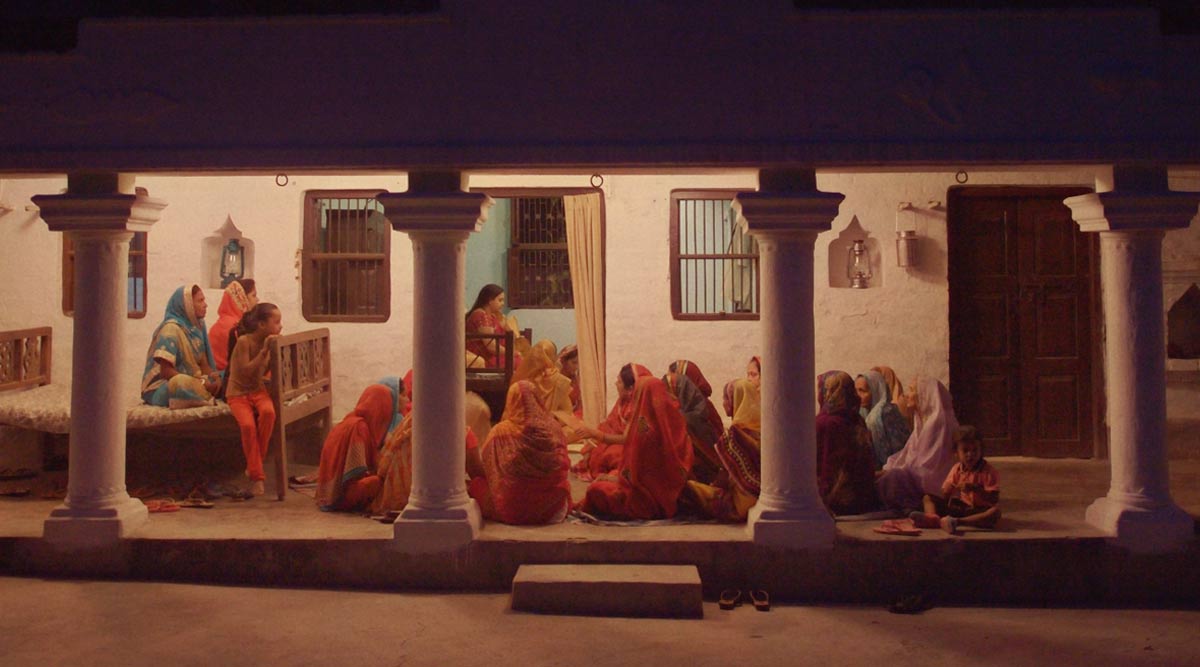When I finished watching Achal Mishra’s Gamak Ghar, I was immersed in an elaborate moment of meditative silence. A sense of resentment gripped me as memories of an estranged past flooded in. Those were the days when the paddy fields still got some rain and farmers were not found hanging from the branches of trees. Those were the days when ancestral homes were treasured as precious bodies of stories and had not yet transformed into neglected, dilapidated cattle sheds.
I hadn’t visited my village in the Kendrapara district of Odisha for almost a decade, until last year. But I sometimes vividly dreamt of the large banyan tree where all the witches were believed to live, the gritty dirt roads and shipwrecked river-banks, the temple of the tribal goddess, the stray dogs who were owned by none but petted by all. There used to be a small pond where I learnt swimming at the age of seven. Now it was reduced to a marshy swamp, conquered by fungi and weeds, dead fish and corpses of men who drowned but were never found. Nestled beside this, was whatever was left of my ancestral home.
The roof of the house had slackened under the weight of everything the house had been through: the death of grandmothers, the funerals of 12-year-olds cursed with thalassemia, broken marriages, devastating cyclones, the wailing and the weeping. The walls had thinned down waiting for us to return. The house smelt of homesickness, like an evacuated paradise, a devalued asset.
During the good times, enumerable little children ran up and down the staircase, passionately hiding and seeking. The women sat in circles on the floor eating Pakhala bhat with mashed potatoes and fried prawns. A couple of goldfish watched quietly from an aquarium which graced the dining hall, the fans moved listlessly in the laziness of the afternoon, and by the evenings, neighbours poured into our living room to watch movies on the only colour TV the village had.
Eventually, the house withered against the velocity of life. The old ones died and the young ones left for other places with pools for ponds and malls for meadows. The beds creaked even though no one sat on them anymore, the roofs leaked even while the monsoons were getting shorter and the house started approaching a slow, undignified demise. What used to be the confluence of festivals and weddings was reduced to a void inside a void: a paralysed past inside and drying streams outside.
Also read: Fear and Hope in Delhi: The Power of Nostalgia and Kites
Watching Gamak Ghar was an attempt of reconciliation with these abandoned origins, an uprooted childhood and the un-dispersed family that used to be. It is a melancholic biography of an ancestral home in rural Bihar, depicting its journey from being the heart of celebrations and vacations to finally end up as a museum of nostalgia.
Mishra has carefully woven a collage of memories, a montage of moments which make the film a realistic, cinematic album. The peculiar details tighten the seams of an emigrated amnesiac’s recollection: the card games, the mango-picking, the immortality of tulsi plants, the omnipresence of hand fans and mosquito nets, a separate chulha on the outside for cooking non-veg, scooters and ambassadors, an earthen pot of cold water, relatives you don’t even know.
As time passes and lesser people care to attend the gatherings, the house keeps getting smaller, as if it’s shrinking to make space for the tangible absence of its members. The old mother is divided like property among the brothers, living with them alternatively; a nomad with so many new homes. Floods come and go. Cities are established on the graves of villages. Photo albums are gradually misplaced and damaged. A family is fossilised.
What makes the past so alluring and comforting? What makes nostalgia so romantic that retrospection often subconsciously transcends into rectification, distorting and falsifying everything to save our hearts from breaking again by the very memory of heartbreak? It reminds me of what Proust wrote in In Search of Lost Time, remembrance of things past is not necessarily remembrance of things as they were.
But is nostalgia equally kind to everyone? What if your past is the mouth of a shark, the eye of a storm you are trying to run away from, a cauldron of regret and guilt that you are unable to get over? Most of the families in my village were wiped out by natural disasters. Mud houses with thatched roofs were reduced to dust. Agriculture was demolished. People and cattle were dragged alike by ferocious water currents, only to be later found clogging drains or being feasted over by vultures. This wasn’t a past of pride or glory but trauma. It left scars as souvenirs. Nostalgia meant reliving a nightmare. In case you were outcastes, there was nothing left to return to. There wasn’t a sense of community to miss. In your own village you were always treated like an intruder. For the marginalised, history repeated itself first as tragedy and always as tragedy.
The film ended on a hopeful note, with a glimpse of the renovation of the house for an upcoming gathering. In a few days, the tulsi plant will be watered again, there will be children running all over the place playing tag and a bunch of men shuffling cards on the front porch. We can’t bring back the past but we can persevere to recreate it. The people will be different, the times would have changed. But when they all sit down together to relish the deliciously cooked meat, stories about grandfather’s plays will be told and heard again.
And then, it will feel like home.
Bijaya Biswal is a doctor and social activist working for LGBTQIA rights in Odisha. You can find him on Twitter @bijaya_biswal

